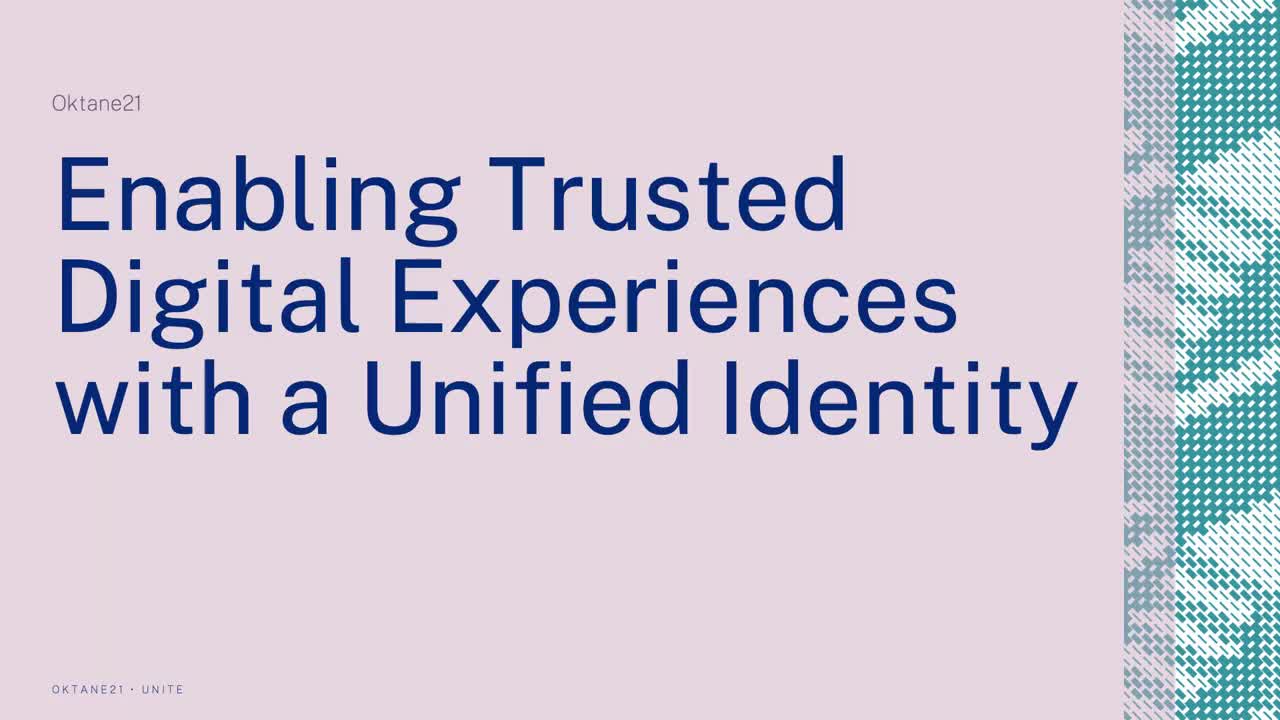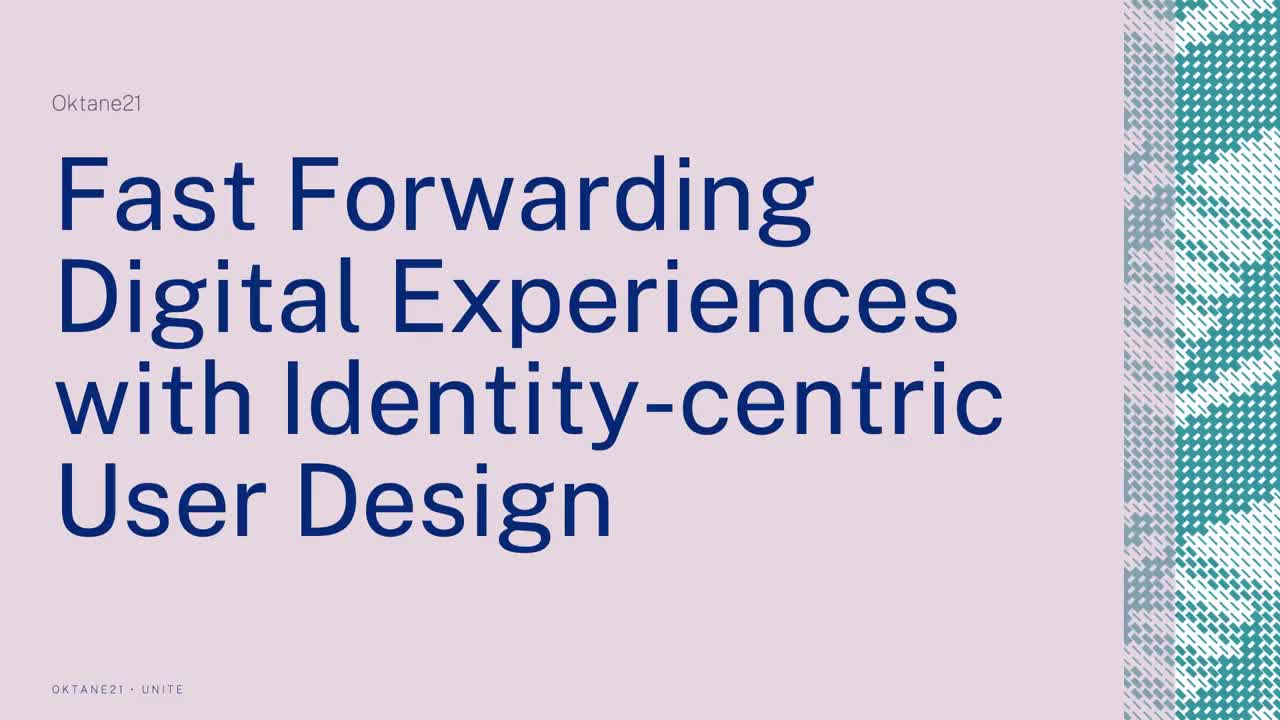Building Trusted Digital Experiences with Okta
Over the past few months, most of us have begun to return to our usual activities. We’re heading back to the office, going out for lunch with colleagues, and boarding planes. But it’s certainly not business as usual. According to a recent McKinsey Global Survey of executives, the pandemic has accelerated corporate adoption of digital products by seven years. As a result, customers have new expectations—they no longer have the patience to log into a user session multiple times in order to accomplish a single task. Complex sites with long loading times are being abandoned earlier, and customers are more aware of security issues than ever before.
It can be challenging to meet these new expectations, especially for companies that weren’t already working on a digital modernization initiative before the pandemic started. For forward-thinking corporations, however, it also presents an opportunity to get ahead of the competition. With the right customer identity and access management (CIAM) strategy, it’s simple to protect your customers’ sensitive data from prying eyes—while ensuring the right people have access to the right resources at the right time.
Seamless, secure access to medical data
Over the past few years, a number of large organizations have paved the path to reinventing their digital strategy around a unified identity. Takeda, a biopharmaceutical company that was originally founded in 1781, is one of them.
A couple of challenges prompted Takeda’s digital modernization initiative. Over time, the company had gone through a number of mergers and acquisitions. As the number of commercial brands operating under the Takeda umbrella continued to grow, the organization’s environment slowly fractured. As a result, the customer login process had become unnecessarily complex and frustrating, especially for people using multiple Takeda products. This disparate environment also created monitoring and reporting challenges—which made it difficult to adhere to stringent industry regulations.
The company had also shifted directions. Traditionally, Takeda has operated as a business-to-business organization offering services to a variety of healthcare providers. A few years ago, however, the organization began offering some services directly to patients, empowering them to take charge of their own health. As a result, Takeda needed an identity infrastructure that would provide healthcare providers and patients with the same great user experience.
Fortunately, Takeda saw these challenges as an opportunity to leverage digital innovation for a more convenient customer experience, a stronger security posture, and a more efficient working environment. It all began with an identity-driven consolidation initiative.
“We see identity as central to our security model,” says Mike Towers, Takeda’s Chief Information Security Officer (CISO). “It’s the crux of how people interact with us. If identity is centralized, we can extend our capabilities to any application that uses our global ID.”
The company implemented a range of Okta Customer Identity products that consolidated its IT environment and provided seamless security across all endpoints. This allowed Takeda to standardize all of its customer and physician identities—across brands—into a single TakedaID.
Now more than 900,000 Takeda users can access all Takeda’s services through a single portal.
“TakedaID and identity have unlocked an entire platform of digital services and new experiences for patients we haven’t traditionally engaged with,” says Towers.
Takeda also benefits from improved security, streamlined provisioning, and improved visibility into activity logs. This allows the company to react quickly to suspicious behaviour and better understand customer needs.
As Towers says: “You can’t build personalized experiences if you don’t know who you are building them for, and you can't have a digital relationship if you haven’t solved for identity.”
Read more about how Takeda broke down silos for a better healthcare experience.
Customized, verified real estate transactions
Fidelity National Financial is another large organization that’s differentiating itself by creating a unified and secure digital experience for traditionally manual and disparate real estate transactions. Like Takeda, the company had a complex infrastructure that grew out of a number of mergers and acquisitions, including five different transaction management systems, 15 user-facing apps, and 20 databases.
Consolidation was an obvious solution, but the company also needed to ensure it could continue to mount a strong defense against security breaches. As a provider of title insurance and other real estate services, Fidelity handles financial data related to the sale and purchase of more than two million houses every year.
Fidelity attempted to begin the modernization process by categorizing the data housed in each of its systems. Then, it planned to use APIs to develop a new, more efficient workflow. But it quickly realized that approach wouldn’t work for a company with a complex user base that required it to provision 400,000 new consumers and 500,000 real estate agents in any given month.
“Our customers are coming to our service once every seven years to interact, and they play a different role every time,” said Jason Nadeau, Fidelity’s Chief Digital Officer (CDO). “Within these disparate systems, we had coupled who our users are and what they do so tightly that it made our systems rigid. Instead, we needed to look at designing our entire digital journey based around identity.”
Fidelity soon discovered that with Okta’s cloud-based solution, it could easily identify all relevant facets of its users’ personal identities, including roles, devices, and activity history. By leveraging that information, it was able to design a user journey that provided a customized access experience while applying just the right combination of security and convenience.
“We had an ‘aha moment’ when we realized how powerful identity can be when abstracted from our existing systems,” says Nadeau. “Thinking from an identity-centric user design perspective made our design experience much more fluid and allowed us to think more about the art of what’s possible and the experiences we can build.”
What can modern identity do for you?
In addition to achieving their identity goals, both Takeda and Fidelity set themselves apart from the competition by enabling seamless customer experiences and creating strong, trusted connections to their brands.
With Okta, you can provide your customers with the same great experience, including easy and secure access to the info they need, when they need it. The end result? Increased customer trust, repeat business, a strong reputation, and a competitive advantage. To learn more about how your organization can achieve these benefits, visit our Trusted Digital Experiences page or contact our Sales team.



